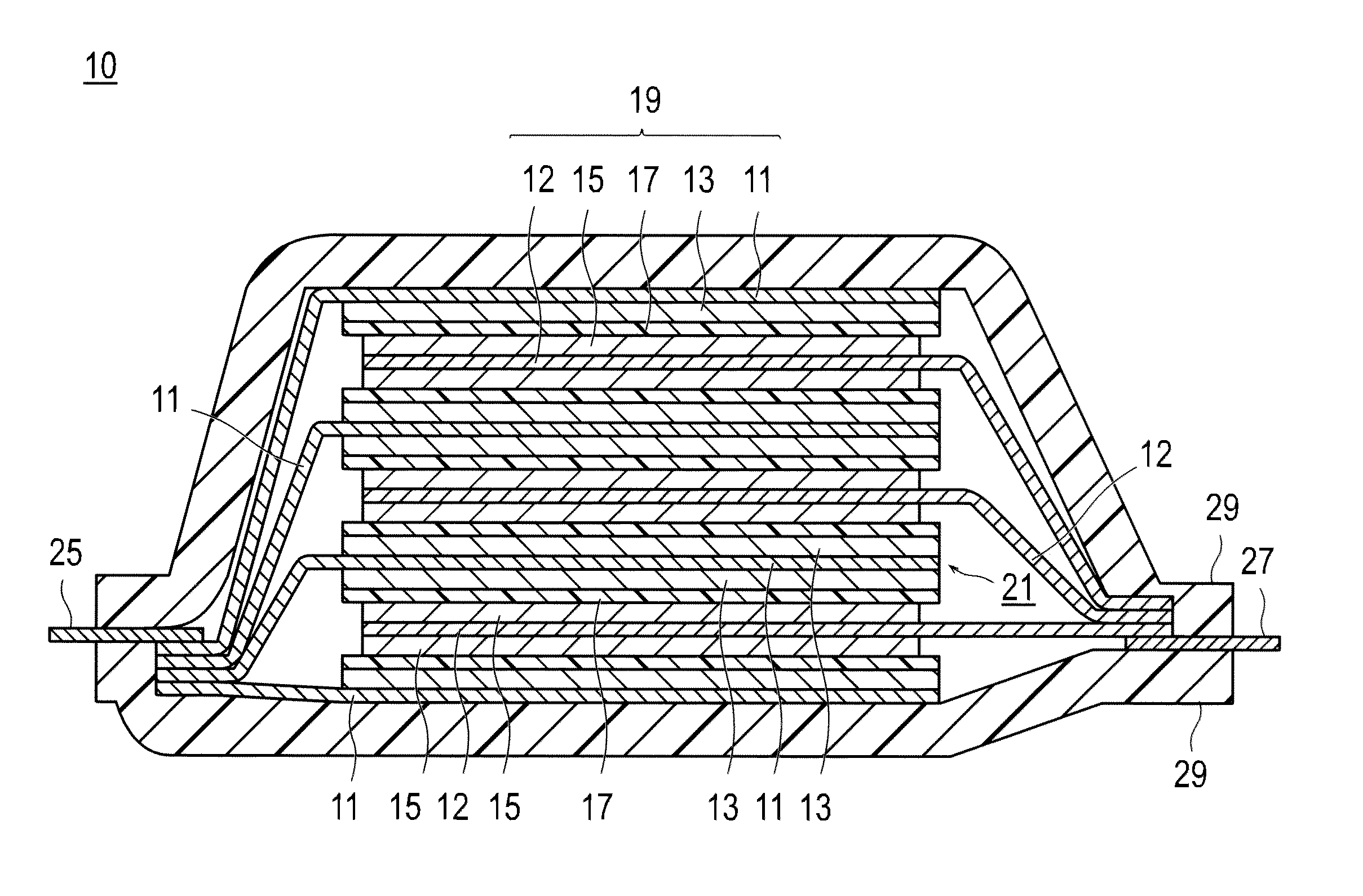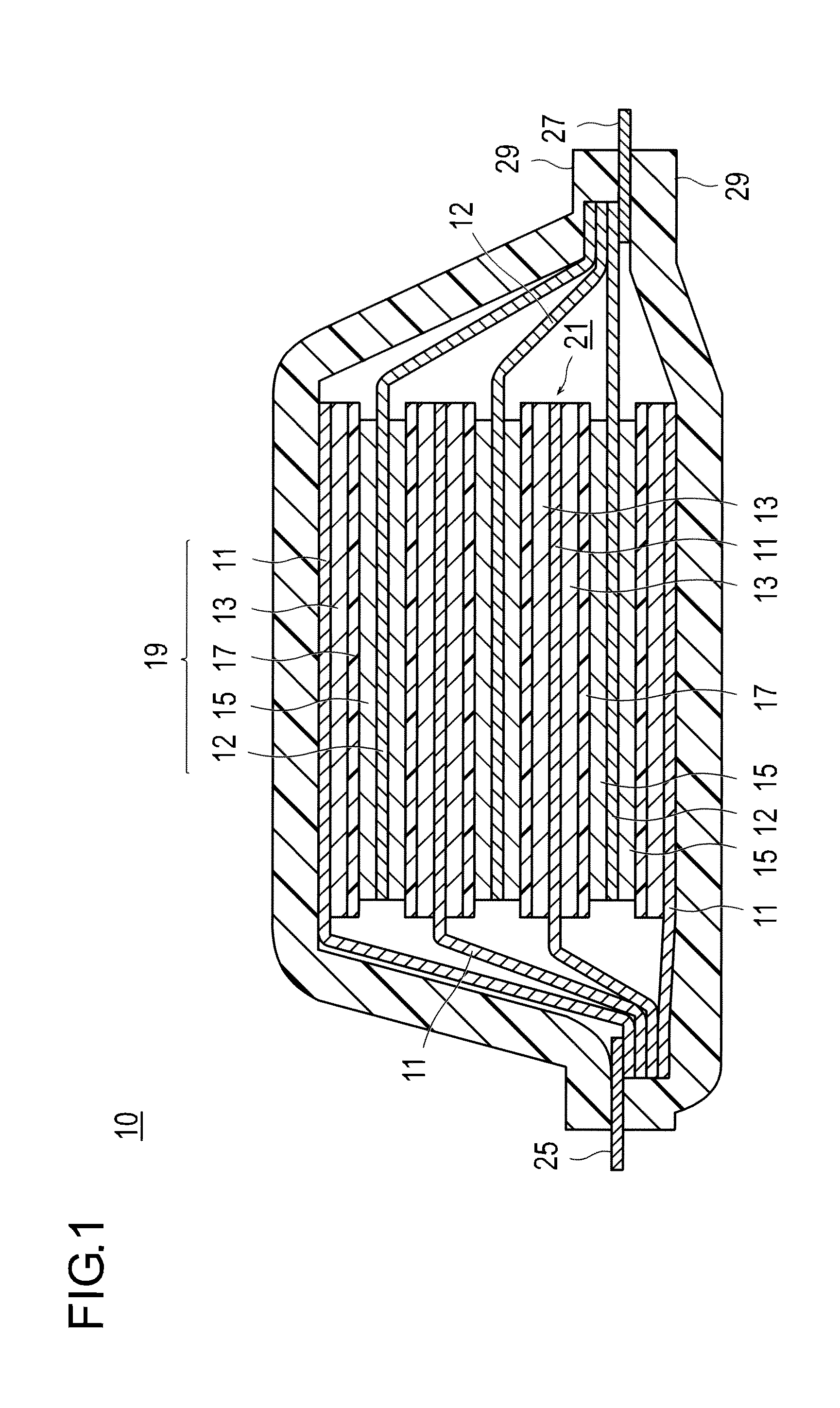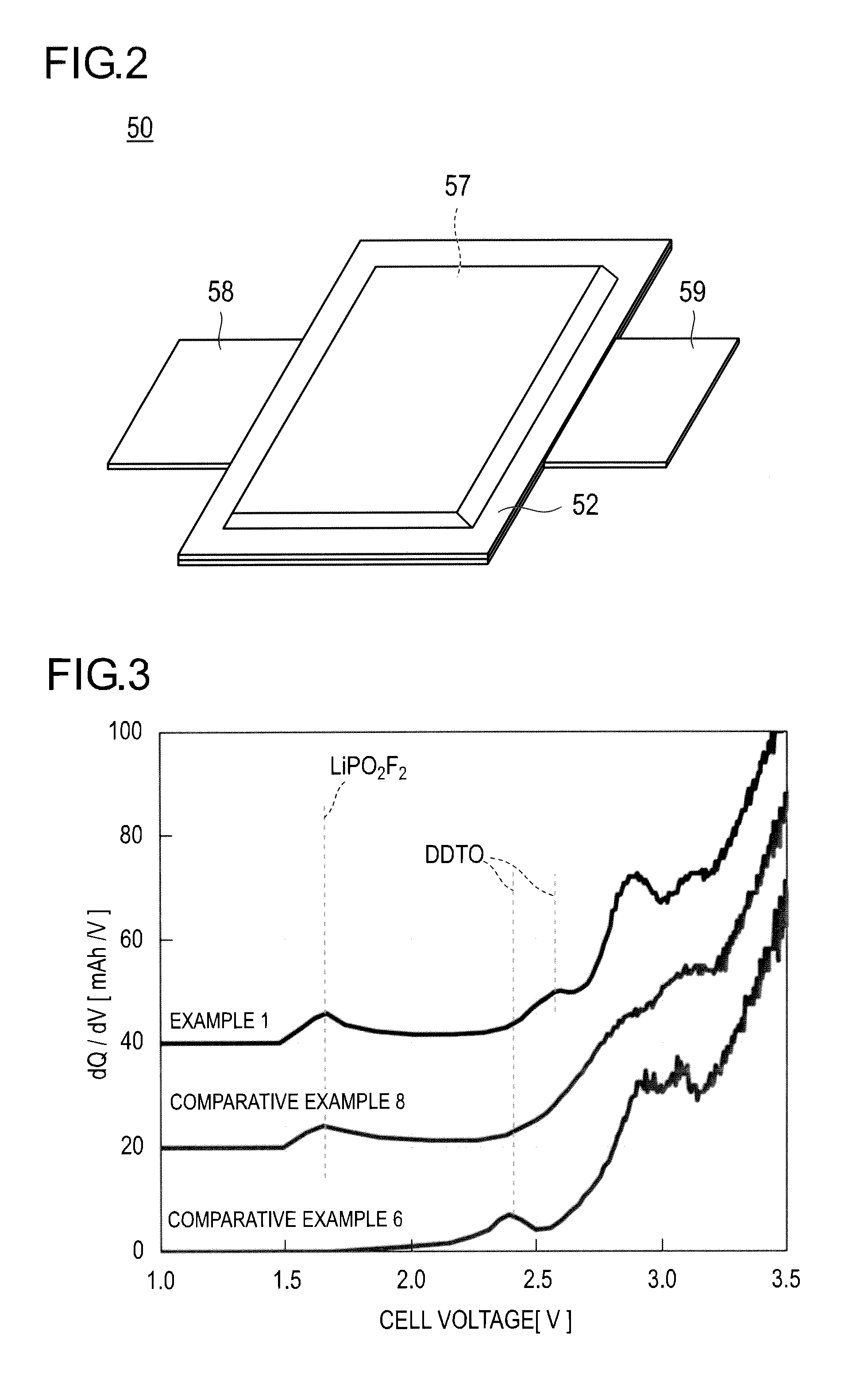Electrical device
a technology of electric devices and negative electrodes, applied in the direction of electrochemical generators, cell components, batteries, etc., can solve the problems of inability to ensure the theoretical charge and discharge capacity of 372 mah/g, and the negative electrode material of carbon graphite, etc., and achieve the effect of excellent cycle durability
- Summary
- Abstract
- Description
- Claims
- Application Information
AI Technical Summary
Benefits of technology
Problems solved by technology
Method used
Image
Examples
example 1
Preparation of Solid Solution Positive Electrode Active Material C1
[0160]1. To 200 g of pure water, 28.61 g of manganese sulphate monohydrate (molecular weight 223.06 g / mol) and 17.74 g of nickel sulfate hexahydrate (molecular weight 262.85 g / mol) were added. The resulting mixture was stirred and dissolved to prepare a mixed solution.
[0161]2. Subsequently, ammonia water was dropwise added to the mixed solution until the pH became 7. A Na2CO3 solution was further dropwise added thereto, and a composite carbonate was precipitated (the PH was maintained to 7 with ammonia water while the Na2CO3 solution was dropwise added).
[0162]3. Thereafter, the precipitate was subjected to suction filtration, washed with water sufficiently, and then dried at 120° C. for five hours in a dry oven.
[0163]4. The dry powder was pulverized with a mortar, and then subjected to temporary calcination at 500° C. for five hours.
[0164]5. With the powder subjected to temporary calcination, 10.67 g of lithium hydro...
example 2
[0194]A battery was manufactured in a similar manner to the above Example 1 except that a Si-containing alloy Si42Ti7Sn51 was used in place of SiOx as the Si material used for preparation of the slurry for a negative electrode. Here, the negative electrode manufactured in this Example is referred to as a negative electrode A2. The Si-containing alloy was manufactured by a mechanical alloying method. Specifically, zirconia pulverizing balls and raw material powders for an alloy were put into a zirconia pulverizing pot, and were alloyed at 600 rpm for 48 hours using a planetary ball mill apparatus P-6 manufactured by German Fritsch Co., Ltd.
[0195]The Si-containing alloy prepared above (Si42Ti7Sn51) has similar characteristics to another alloy which can be used in the present invention (an alloy other than Si42Ti7Sn51 among SixTiyGezAa, SixTiyZnzAa, and SixTiySnzA). Therefore, the alloy which can be used in the present invention brings about the same result as the present Example using...
example 3
[0196]A battery was manufactured in a similar manner to the above Example 2 except that Si34Sn21C45 was used in place of Si42Ti7Sn51 as the Si material (Si-containing alloy) used for preparation of the slurry for a negative electrode. Here, the negative electrode manufactured in this Example is referred to as a negative electrode A3.
[0197]The Si-containing alloy prepared above (Si34Sn21C45) has similar characteristics to another alloy which can be used in the present invention (an alloy other than Si34Sn21C45 among SixSnyAlzAa, SixSnyVzAa, and SixSnyCzA). Therefore, the alloy which can be used in the present invention brings about the same result as the present Example using Si34Sn21C45 or a similar result thereto.
PUM
| Property | Measurement | Unit |
|---|---|---|
| valence | aaaaa | aaaaa |
| weight | aaaaa | aaaaa |
| composition | aaaaa | aaaaa |
Abstract
Description
Claims
Application Information
 Login to View More
Login to View More - R&D
- Intellectual Property
- Life Sciences
- Materials
- Tech Scout
- Unparalleled Data Quality
- Higher Quality Content
- 60% Fewer Hallucinations
Browse by: Latest US Patents, China's latest patents, Technical Efficacy Thesaurus, Application Domain, Technology Topic, Popular Technical Reports.
© 2025 PatSnap. All rights reserved.Legal|Privacy policy|Modern Slavery Act Transparency Statement|Sitemap|About US| Contact US: help@patsnap.com



